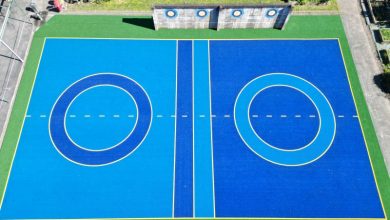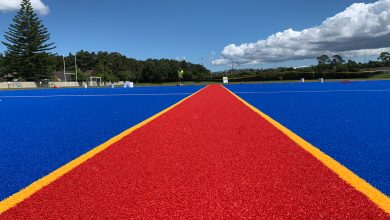Sports Uniform Superstardom

When one of Australia’s oldest single sex schools enabled a trans student to remain at the all-boys school despite having transitioned to female, in a largely student-led decision, it made headline news earlier this year.
One of the key factors in creating a sense of belonging was the school uniform. The school collaborated with the student to custom-redesign a version of the school uniform for her that would make attendance feel more comfortable.
Term 3 issue of School News print magazine is available for free here.
This story highlights the importance of school uniforms in community building. Whether it is in the classroom or on the sports field, clothing speaks powerfully to our send of personal identity and collective belonging. In sport, the power and pride that comes from shared identity and team recognition can make a huge difference both on and off the field.
Sports uniforms are also widely popular among students: fascinating research published recently in the Australian and New Zealand Journal of Public Health found that 62 percent of students who participated in their study reported a desire to wear their sports uniform every day. In the same study, two thirds of students also reported feeling they would be more physically active during breaktime if they were wearing their sports uniform. However, researchers McCarthy et al pointed out that many schools still have policies in place that insist students must not wear sports uniforms on non-sports days. They write:
“Given the low prevalence of children, particularly girls, meeting physical activity guidelines and the decline in physical activity as children age, allowing students the opportunity to wear more activity-friendly uniforms may represent a simple, inexpensive and potentially effective strategy in achieving population-level improvements in children’s physical activity” (94-95).
Moreover, in his well-known research, Jon Swain from University College London found that for primary school pupils’ “style of dress was intrinsically linked to their own identity” and so clothes act as a powerful signifier for students’ feelings of worthiness and form an essential ingredient of social acceptability (or, on the flipside, rejection) within their specific peer-groups and cultures. Twain’s study showed that from a young age, students’ sense of identity, community, and belonging are impacted by their clothing. As such, at all age levels, team uniforms instil a sense of unity, value and belonging that can help symbolise the school’s values far beyond distinguishing players across opposing teams.
Interestingly, in their 2021 study, researchers Bass et al delved deeply into the correlation between professional sport team identification and community pride, exploring links between feelings of “pride in possessions” and “pride in performance”, which authors suggest “create a perception of prestige among sport consumers”. As relevant to the school sports field as the international sport world then, pride is a powerful cornerstone in sport team allegiance, and one which can be enhanced in various ways. Wearing the school colours and crest on your chest can be as symbolic as it is practical on the field.
The makings of a stellar school uniform
As design and manufacturing innovation continues apace, with a trend towards sustainable production, school uniforms are increasingly created for practicality and performance. With unlimited budgets, the sportswear world is a school’s oyster – aerodynamicism, breathability, and ergonomics can all come into play at a level accessible to a school’s clothing coffers.
Modern fabrics include bamboo and hemp for their sustainable properties. Adding garments made from these game changing components can provide a boost in unlikely ways, such as environmental feelgood among players and perhaps even a quirky news story to share in the school’s communications to its community or local media. It is certainly unlikely to do your brand any harm.
Schools usually aim to strike a balance between fashion, innovation, performance, practicality, and the aforementioned sustainability. Keeping it cool is important both during the heat of sports battle and in the minds of fashion-conscious students. It’s all well and good having the very latest in hi-tech fabric and design if clothing doesn’t fit with students’ perceptions of ‘cool’. There needs to be an acceptable level of wearability for most teens. In other words, school sportswear needs to be a ‘no cringe’ zone.
Durability and washability are key considerations and, in 2022, there is no excuse for providing shoddy short-life sports garments.
Warm waterproof jackets are a heavy-duty item with a long shelf life and seasonal use that can be customised with initials, for example, as well as the school logo and sport name. Initialled pieces say, ‘I’m a part of the team, but I’m also uniquely me.’ They promote inclusion and individuality – cornerstones of sport and life.
Off the field, supporters, often passionate parents and caregivers, love being part of the school sports community. Enabling them to demonstrate their support outwardly with their clothing is a way to include and celebrate, both on the side lines at game day and beyond.









